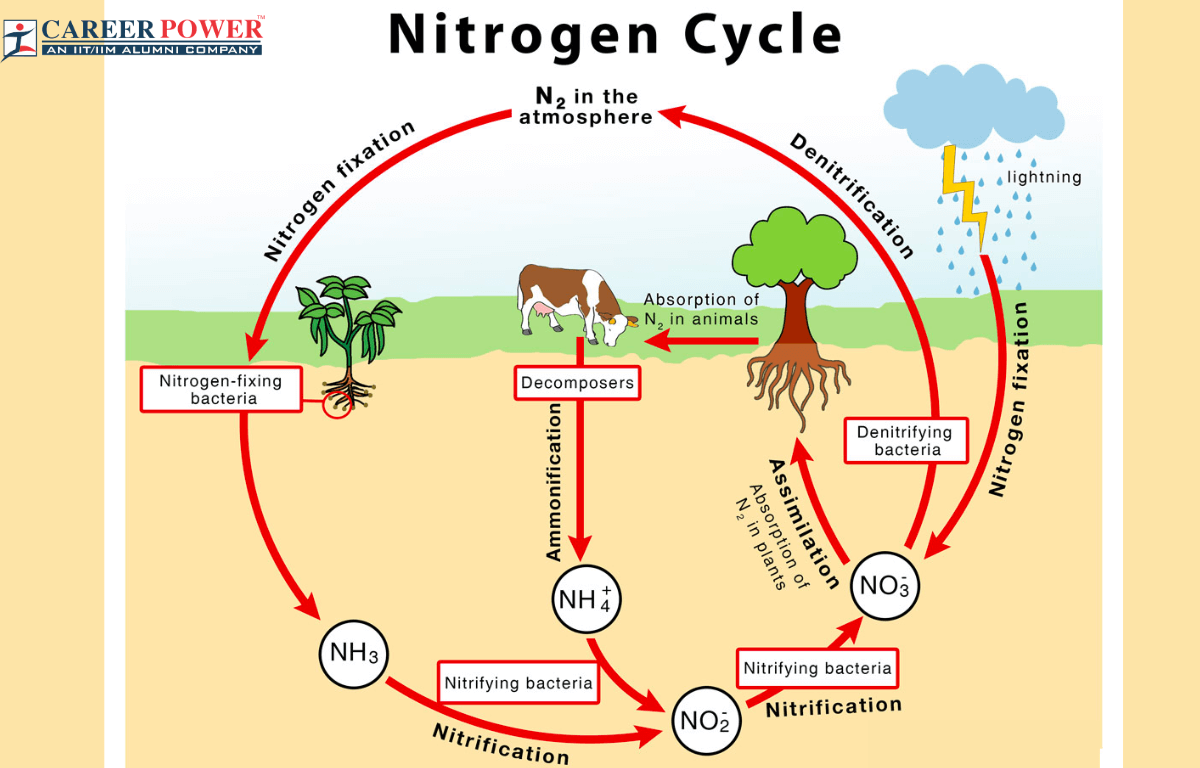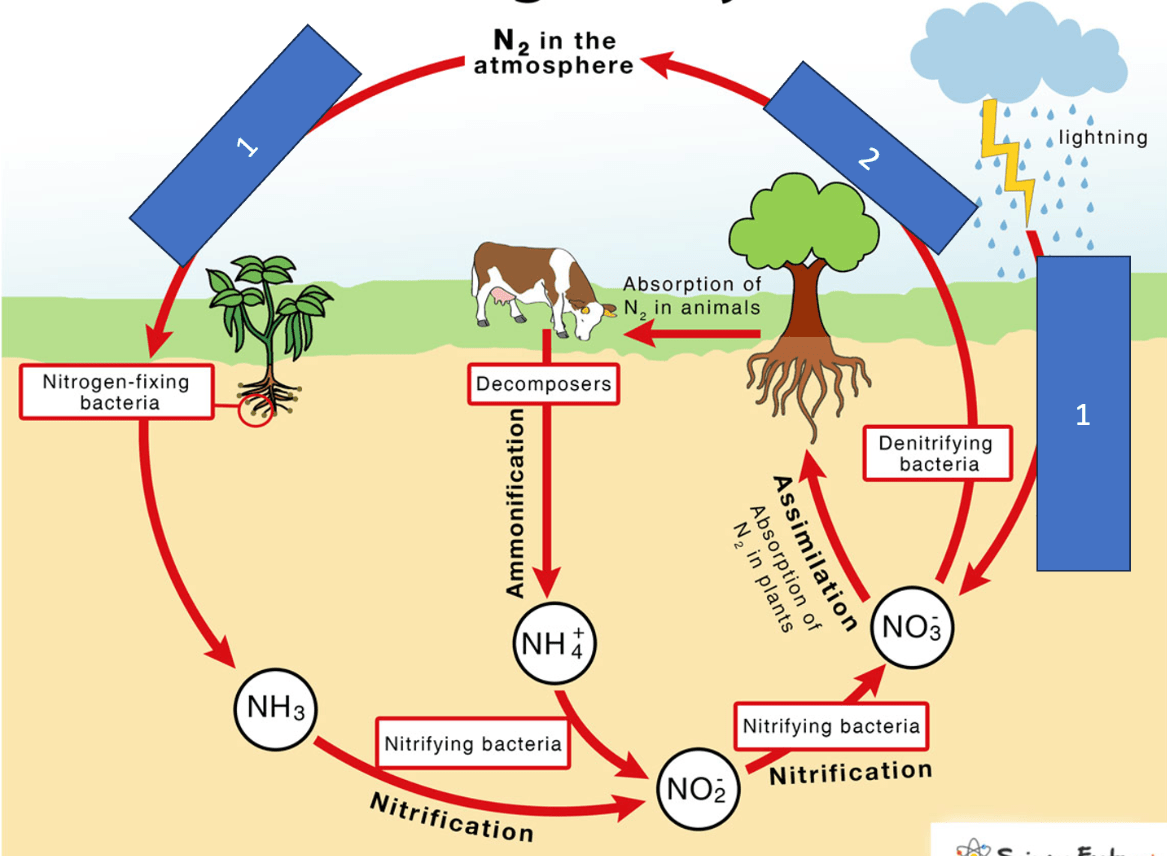Why is carbon important
building block for all organic molecules
Why is nitrogen important?
One of the primary nutrients critical for the survival of all living species
What are the three phases of water that exist on earth
solid, liquid and gas
What are the four factors affecting population size
(remember the equation)
1.births
2.deaths
3.immigration
4.emigration
What is released back into the atmosphere during cellular respiration
glucose+ oxygen -> carbon dioxide + water
carbon dioxide
How does carbon move from the atmosphere to terrestrial and aquatic plants?
carbon moves by photosynthesis
Name one process in the nitrogen cycle and explain it

Nitrification: other bacteria in the soil convert ammonia into nitrates and nitrites
Nitrogen fixation: bacteria convert nitrogen gas into ammonia
Denitrification: bacteria convert nitrates and nitrites back into nitrogen gas
Ammonification: decomposers breaks down waste and releases it back into the ecosystem as ammonia
What are the three major processes of the water cycle
evaporation, condensation, and precipitation
What is a limiting factor and name 2 examples.
A limiting factor is any biotic or abiotic factor that decreases the growth of a population in an ecosystem
example. competition, predation, disease, natural disasters, human disturbance, food, water, shelter
What is cellular respiration used for
glucose + oxygen --> carbon dioxide + water
Cellular respiration is used to break down glucose and turn it into energy
How does human activity affect the carbon cycle?
Humans extract fossil fuels from the Earth, and burn them to provide power, heat and electricity. The burning of fossil fuels releases large amounts of carbon dioxide into the atmosphere.
What occurs when there is an excess build up of nitrogen? (eutrophication)
Nitrogen from fertilizers gathers in excess from runoff's to bodies of water, resulting in overgrowth of algae
Describe what a runoff
Runoff describes a variety of ways in which liquid water is pulled by gravity over and under the ground
What are factors that can affect an ecological niche
Habitat, activity patterns, resources it obtains, and interactions with other species
Why is glucose important for all living things, and how is glucose produced
1. Glucose is the fuel for all living things (energy)
2. produced through photosynthesis
Word bank: plant respiration, photosynthesis, dead organisms and waste products

1. photosynthesis
2. plant respiration
3. dead organisms and waste products
word bank: denitrification, nitrogen fixation

1. Nitrogen fixation
2. Denitrification
Word bank: evaporation, accumulation, condensation

1. condensation
2. accumulation
3. evaporation
What are 3 examples of symbiotic relationships
symbiotic ( any relationship that involves two or more organisms)
1.Mutualism (two organisms both benefit from the relationship) Ex. bee and flower
2. Parasitism (two organisms are involved, 1 benefits, other is harmed) Ex. mosquito and human
3.Commensalism (two organisms are involved, 1 benefits, the other is unharmed) Ex. whales and barnacles
Why are photosynthesis and cellular respiration complementary processes?
What are the word equations?
word bank: water, glucose, carbon dioxide, oxygen
equation ____+_____ -> ____+______
They are complementary because the products of photosynthesis are the reactants of cellular respiration.
Photosynthesis : carbon dioxide + water --> glucose + oxygen
cellular respiration : glucose + oxygen --> carbon dioxide + water